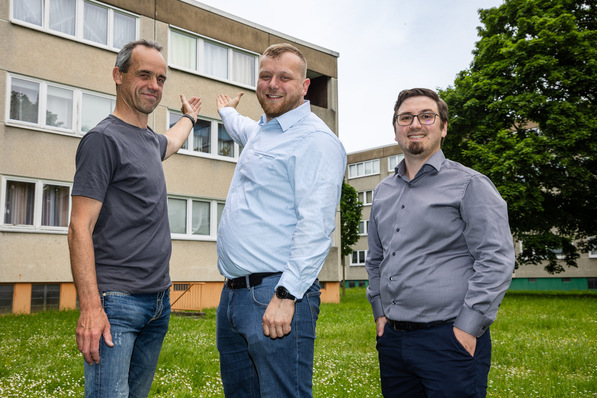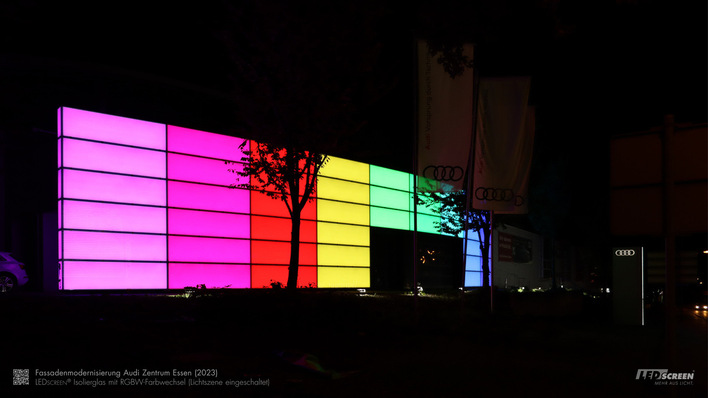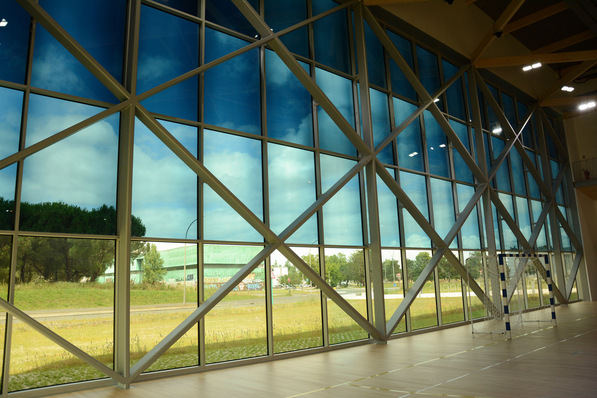Click here for the second part of this series on building-integrated photovoltaics (BIPV).
The main challenge is that BIPV systems have to be planned in an interdisciplinary and cross-trade manner, that responsibility is therefore often spread over several shoulders and that some stakeholders are not yet familiar with such components. Planning and installation of a BIPV system can therefore not always be carried out quickly, reliably and cost-effectively. Conflicting requirements resulting from guidelines and regulations of different independent bodies are another aspect that can lead to difficulties in planning, manufacturing and installation.
Another problem: In many cases, the constructive integration of BIPV modules requires a project-specific adaptation of the modules. Very often this concerns the size of the modules or the aesthetics. However, with a change, the product properties can change, potentially invalidating certificates and approvals. A possible solution for manufacturers is to take the preparatory tests into account, but not to apply for approval for the time being. This increases flexibility; the test certificates serve as a template for applying for a project-related type approval.

AGC Glass Europe
In addition, customised module sizes, for example with special PV cell coverage of the module surface or individual colours, often influence the electricity yield, which in turn affects the ecological building assessment and product labelling according to IEC 61215 and building product regulations. A possible solution to this difficulty is to certify several subcategories for one product and each of the subcategories with a limited number of parameters. In the case of customised module sizes, the number of PV cells per module area could be a good parameter.
Applicable standards and regulations
When planning, dimensioning and executing PV modules in the building envelope, it is helpful to distinguish between several installation types with fundamentally different requirements. Installation typologies can be found in the two-part European BIPV standard EN 50583 and the two-part international BIPV standard IEC 63092, which was developed on the basis of EN 50583 by IEC Technical Committee 82 (photovoltaic solar energy systems) in cooperation with ISO Technical Committee 160 (glass in building). Essentially, IEC 63092 and EN 50583 attempt to bring together the requirements from standards for building products and PV systems. However, planning problems also arise with the various forms of installation, which are caused by the interdisciplinary requirements for break-through resistance indoors, protection against fall-through/falling and break-through resistance outdoors. Especially with these topics, international (e.g. EN ISO 12543) or European product-related requirements (e.g. EN 14449) are often not coordinated with national or local installation or application requirements.

Johannes Kimmerle
[Glass facades generate solar power with organic PV]
Architects and planners must take all these aspects into account when planning BIPV and integrate them into the design. It is important to note that the planning process for an energy-efficient and resource-saving BIPV system involves all nine service phases. The main focus of the planning is, among other things, on the determination of the PV area to be installed, the associated potential assessment (e.g. yield assessment including shading analysis), the electrical design calculation and finally the economic viability of the system. Furthermore, the electrical wiring and cable routing as well as the multifunctional evaluation of the components for the building envelope are of interest. In addition, aspects of building regulations must be taken into account at an early stage in the planning, namely the intended design and use of PV modules as a building product as well as their application as a type of construction. Concepts for maintenance and monitoring are also helpful for the effective and sustainable use of PV modules after their installation. Last but not least, the fire protection behaviour of the modules must be verified for BIPV systems if the building authorities require the use of non-combustible or flame-retardant materials.
Full integration in BIM systems
As the new products need to be fully integrated into the design, construction and operation of buildings, solar facades should be given an appropriate place in Building Information Modelling (BIM) systems. In the SolConPro project and the SCOPE project launched in 2018, Fraunhofer ISE is working on precisely this with partners from the construction industry and information technology. In future, a planner looking for a facade should be able to access the "solar facade" option via BIM as easily as conventional facades or other building components.
[The Energy Brick: A design for a solar-powered brick facade]
In another research project on BIPV launched in 2020 as part of the Baden-Württemberg Solar Offensive, Fraunhofer ISE and four project partners will develop a guideline by the beginning of 2023 to optimise the planning and construction processes with BIPV, as well as a draft BIPV guideline as a recommendation for politicians. The aim is to simplify construction planning for the benefit of experts and accelerate the energy transition.

AKBW / Jan Potente
Further necessary steps
With the technological design possibilities, BIPV systems can be tailored to a wide range of buildings. Other important future steps on the way to the mass market would be an increasing number of lighthouse projects that increase visibility and enable experience to be gained with BIPV. Also needed are innovative business models in the context of future renewable energy systems, simplified and harmonised regulations, and a general increase in digitalisation.
[A vibrantly colourful facade for the Plaza in Munich]
In particular, the digitalisation of the entire value chain would be very helpful for the construction sector in general and BIPV technology in particular, as it would enable smooth and quality-assured communication between the different trades and throughout the entire construction process. Then there would indeed be no more obstacles to the BIPV mass market. The solar module in the building envelope would then become as natural as the shutters on the window today. This would not only make the energy consumption of buildings more sustainable, but could also breathe new life into the European solar industry and kick-start the energy transition in the building sector.















